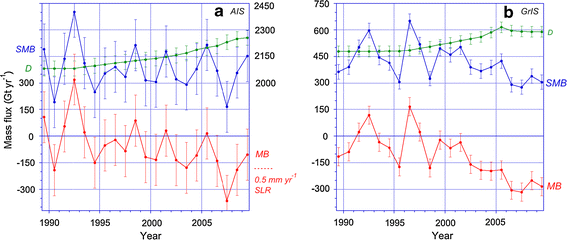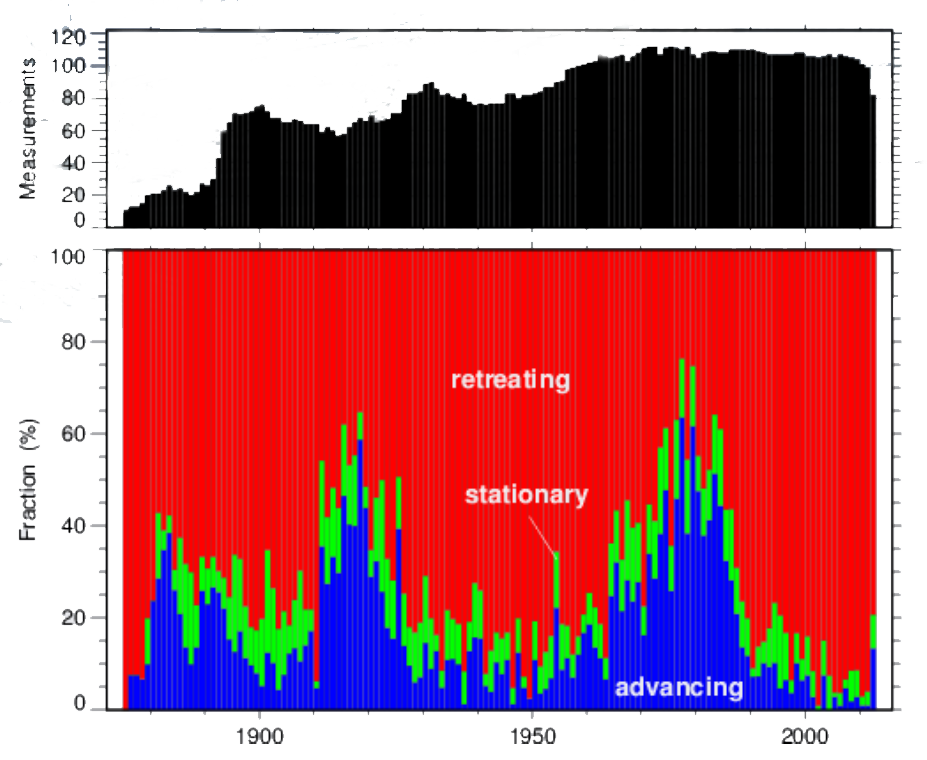The extent of ice coverage is an important parameter because ice reflects approximately 35% of incident sunlight while water reflects only ca. 7%.
Artic ice coverage has been diminishing since it is measured, as shown here:

Arctic Sea Ice Extent with sea ice concentration > 15% as of Sep. 28, 2014
Source: IARC-JAXA Information System (IJIS)
Greenland is the second largest emerged area covered by ice. From a total of 2.6 million Gt (or 2’850’000 km3) ice mass, it is receding by 260 Gt a-1 (-0.01%per year). At this rate it may take 10’000 years to melt it all.
In the Antarctic, a mass balance over 19 years indicates a net loss of -71 ± 53 Gt a-1 from a total of 26.92 million km3 (26.92 million Gt). At this rate the total melting would take place in 380’000 years.

Time series of surface mass balance (SMB, blue), solid ice discharge (D, green) and ice sheet mass balance (MB, red) for the Antarctic Ice Sheet (AIS, left) and the Greenland Ice Sheet (GrIS, right) in Gt/a.
For the AIS (left), scale for SMB and D has been shifted (right ordinate) to allow plotting on the same scale as for the GrIS (right). D is assumed constant before 1992.
Source: link.springer.com/article/10.1007/s10712-011-9137-z/fulltext.html
Other glaciers are globally in retreat in the Alps, in the Himalya, in South and North America. While the implied water volume is not as large as for Greenland or the Antarctica, it constitutes an important stock of fresh water for agriculture and human consumption in the corresponding drainage basins.
Example from the Swiss Alps:

Swiss glacier length variation. Note the periods of growth and retreat that are not
necessarily in phase with observed temperature evolution. Source: glaciology.ethz.ch

Length and mass balance of selected Swiss glaciers
Source: Frank Paul et al, Les Alpes, juillet 2011.


